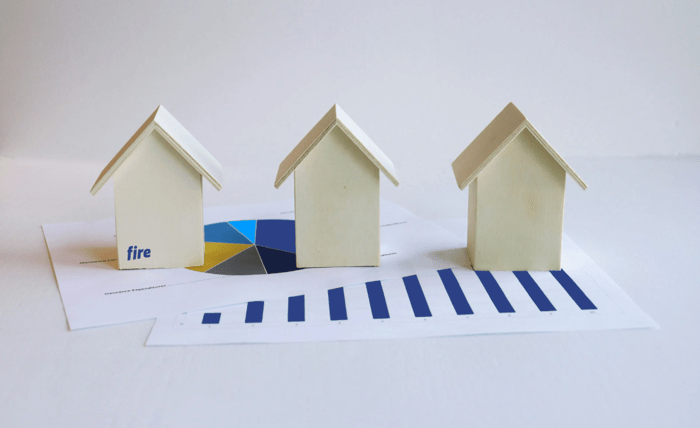
Flat-rate property management is revolutionizing how landlords and property managers operate, offering a predictable, cost-effective alternative to traditional percentage-based models. Unlike conventional management services that charge a percentage of monthly rent—often 8-12%—flat-rate models provide a fixed fee, regardless of rental income. This approach simplifies budgeting, enhances transparency, and appeals to landlords seeking to maximize profits while maintaining high-quality management. As the rental market grows, flat-rate property management is gaining traction for its simplicity and scalability.
The Shift to Flat-Rate Models
The property management industry has traditionally relied on percentage-based fees, where managers charge a portion of the rent collected. While effective for high-rent properties, this model can be costly for landlords with lower-rent units, eating into profits. Flat-rate property management emerged as a response to this challenge, offering a fixed monthly fee per unit, typically ranging from $30 to $100. This predictability allows landlords to forecast expenses accurately, regardless of rental income fluctuations.
The rise of technology has fueled this shift. Platforms like Hemlane and RentRedi leverage automation to reduce management costs, enabling flat-rate pricing without sacrificing service quality. These platforms handle tasks like rent collection, tenant screening, and maintenance coordination, reducing the need for extensive staff and overhead. The result is a cost-effective solution that appeals to both small landlords and large portfolio owners, with studies showing that flat-rate models can save landlords up to 40% compared to traditional fees.
Core Features of Flat-Rate Property Management
Flat-rate property management platforms offer a robust set of features designed to streamline operations. Rent collection is a cornerstone, with apps allowing tenants to pay via ACH, credit cards, or cash deposits. Hemlane, for instance, ensures rent is deposited directly into landlords’ accounts, with automated late fee enforcement. This eliminates manual payment tracking, saving time and reducing errors.
Tenant screening is another key component. Platforms like TurboTenant provide access to credit, criminal, and eviction reports for a flat fee, ensuring landlords select reliable tenants. Lease management tools enable digital creation and e-signing, with RentRedi offering customizable lease templates to meet local regulations. Maintenance coordination is simplified through tenant portals, where renters submit requests, and landlords assign vendors, as seen in Renters Warehouse.
Financial reporting is critical for tax compliance and portfolio analysis. Apps like Stessa generate profit and loss statements, cash flow reports, and Schedule E documents, all included in the flat-rate fee. Integration with listing sites like Zillow allows landlords to market vacancies efficiently, while communication tools like in-app messaging enhance tenant interactions.
Benefits of Flat-Rate Models
The primary benefit of flat-rate property management is cost predictability. Unlike percentage-based models, where fees scale with rent, flat-rate fees remain constant, making budgeting easier. For example, a landlord with a $1,000-per-month unit paying a 10% fee would incur $100 monthly, while a flat-rate fee of $50 saves $600 annually. This is particularly advantageous for low-rent properties, where percentage fees disproportionately impact profits.
Efficiency is another major advantage. Automation reduces administrative tasks, with platforms like DoorLoop handling everything from screening to accounting. This allows landlords to manage larger portfolios without hiring additional staff. Scalability is inherent, as flat-rate platforms support portfolios of any size, from single units to thousands, without increasing per-unit costs.
Tenants benefit from improved services, as platforms prioritize user-friendly interfaces and quick response times. Apps like Innago offer 24/7 support, ensuring tenant issues are addressed promptly. Transparency is enhanced, with both parties accessing payment and maintenance records, reducing disputes and fostering trust.
Leading Flat-Rate Property Management Platforms
Several platforms exemplify flat-rate property management. Hemlane offers a flat fee starting at $30 per unit, including tenant placement, rent collection, and maintenance coordination. Its eviction protection feature, which avoids 93% of courtroom cases, adds significant value. RentRedi charges a flat rate for unlimited units, with features like cash payments and tenant screening, making it ideal for diverse portfolios.
TurboTenant’s free plan, with optional paid features, appeals to budget-conscious landlords. Its integration with listing sites and accounting tools ensures comprehensive management. Innago offers a completely free platform, with premium features available at a flat rate, emphasizing ease of use and robust support. DoorLoop’s flat-rate pricing starts at $69, offering scalability and advanced features like CRM and owner portals.
Security and Compliance
Security is paramount, with platforms using encryption and multi-factor authentication to protect data. Compliance with fair housing laws and regulations like GDPR is standard, with apps like Rentec Direct offering audit trails for accountability. Features like secure document storage ensure lease agreements and financial records are protected.
Choosing the Right Platform
Selecting a flat-rate platform requires evaluating portfolio size, feature needs, and budget. Small landlords may prefer TurboTenant’s free plan, while large firms benefit from DoorLoop’s scalability. Ease of use, as seen in Avail, is critical for non-technical users. Integration with tools like QuickBooks or Zapier enhances functionality, while strong support, like Rentec Direct’s, ensures quick issue resolution.
Challenges and Solutions
Adoption challenges include tenant resistance to digital platforms and integration with existing systems. Tutorials and onboarding sessions, as offered by RentRedi, address resistance. Open APIs, like those in RentPost, ease integration. Cost concerns for large portfolios are mitigated by flat-rate pricing, ensuring affordability.
Future Trends in Flat-Rate Management
Artificial intelligence will enhance flat-rate platforms with predictive analytics for tenant selection and maintenance scheduling. Blockchain could secure transactions and records. Integration with smart home systems will allow landlords to manage utilities remotely. Sustainability efforts, like paperless processes, will align with environmental goals.
Success Stories and Impact
Landlords using flat-rate platforms report significant savings. A Hemlane user reduced management costs by 50% while managing 20 units. A RentRedi client streamlined operations for 100 units, cutting administrative time by 60%. Tenants appreciate the convenience, with one Innago user praising its intuitive interface and 24/7 support.
Conclusion: The Future of Property Management
Flat-rate property management is reshaping the industry, offering cost-effective, scalable solutions for landlords. By leveraging technology to automate tasks and enhance tenant experiences, these platforms are essential for staying competitive in a digital-first rental market.




